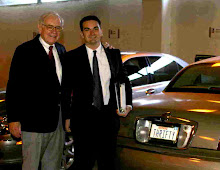Budweiser gets some recognition and triggers a thought
All this got me very interested in another stock I have been watching lately and which took a big hit yesterday. Wrigley's is a Buffett stock if I have ever seen one, and is similar to AB in a remarkable number of ways. Family-owned and run for nearly a century, a comparable dividend yield, consistent growth for decades, easily-understood consumer product, an impenetrable moat and ubiquitous brand. I finally broke down and bought some shares today at $46.75, the lowest the stock has been in over two years.
The stock took a big hit yesterday after the company announced its first quarter earnings were down sharply, due first to the costs of its newly-acquired brands and second to its expensing of stock options. With the latter clearly being irrelevant, we can focus on the expenses associated with the former. Last summer was big for the company. It issued debt for the first time in recent memory to finance the acquisition of the Kraft confectionary group, which includes such products as Altoids and Lifesavers.
With its stellar credit rating, the company was able to finance this purchase for less than 5%. After the purchase, the company began advertising its new brands heavily and attributes these costs to the reduction in profitability – gross margins fell from 56% a year ago to 51%. So despite record sales, net income was off. I see this as a very short-term problem, and one that has appropriately been priced in to the stock. With these costs behind it, now is an excellent time to buy.
Time will tell, of course, but it wouldn’t surprise me a bit to see this stock behave the same way BUD has for the past couple years. Give the market time and it will realize how strong this company is. WWY is a bargain, I think, at $47 and worth a place on everyone’s watch list if not in a portfolio.

